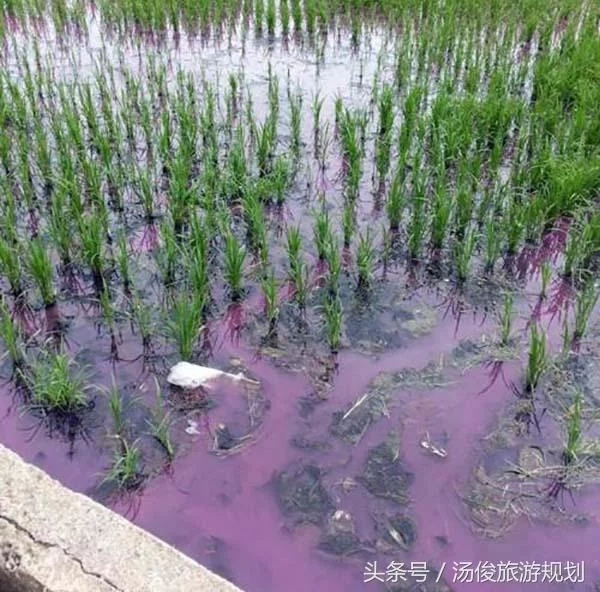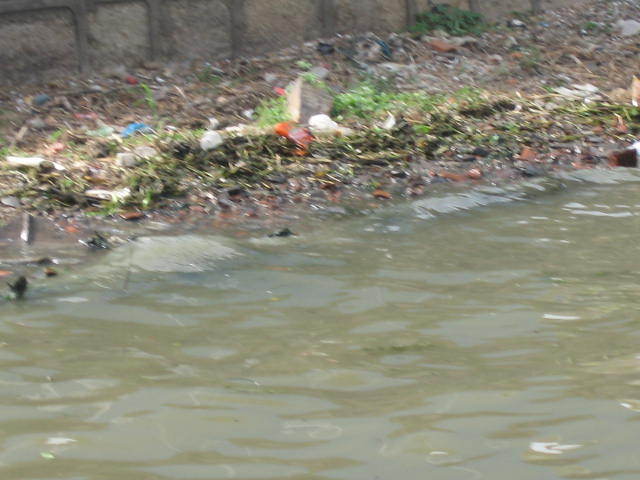Water Pollution
Human activities will make a large number of industrial, agricultural and domestic waste into the water, so that the water is polluted. At present, more than 420 billion cubic meters of sewage are discharged into rivers, lakes and seas around the world every year, polluting 5.5 trillion cubic meters of fresh water, which is equivalent to more than 14% of the total global runoff.

In the Law of the People's Republic of China on the Prevention and Control of Water Pollution promulgated in 1984, "water pollution" is clearly defined, that is, the intervention of a certain substance in a water body leads to changes in its chemical, physical, biological or radioactive characteristics, thereby affecting the effective use of water, endangering human health or destroying the ecological environment, and resulting in the deterioration of water quality
Water pollution is mainly caused by the pollutants produced by human activities, including mine pollution sources, industrial pollution sources, agricultural pollution sources and domestic pollution sources.
Industrial wastewater is an important source of water pollution. It has the characteristics of large quantity, wide area, complex composition, high toxicity, difficult to purify and treat. According to China's Water Resources Bulletin in 1998, the country's total wastewater discharge was 53.9 billion tons (excluding direct current cooling water), of which industrial wastewater discharge was 40.9 billion tons, accounting for 69%. In fact, the amount of sewage discharged is far more than this number, because the industrial sewage discharge of many township enterprises is difficult to count.
Agricultural pollution sources include livestock manure, pesticides, fertilizers and so on. In pesticide sewage, the content of organic matter, plant nutrients and pathogenic microorganisms is high, and the content of pesticides and fertilizers is high. China currently does not carry out agricultural monitoring, and according to relevant data, on 100 million hectares of arable land and 2.2 million hectares of grassland, 1.104,900 tons of pesticides are used every year. China is one of the countries with the most serious soil and water loss in the world, with the annual loss of about 5 billion tons of topsoil, resulting in a large number of pesticides and fertilizers flowing into rivers, rivers, lakes and reservoirs with the topsoil, and the subsequent loss of nitrogen, phosphorus and potassium nutrients, causing 2/3 of lakes to be affected by different degrees of eutrophication pollution, resulting in abnormal reproduction of algae and other organisms. It causes the change of water transparency and dissolved oxygen, resulting in the deterioration of water quality.
Water pollution
Mine environmental pollution refers to the influence and harm caused by many factors on the environment in the process of mining. Among them are mainly mine drainage, ore and waste rock piles produced leached water, mining industrial and domestic wastewater, ore dust, coal emission and SO2 and radiation of radioactive substances, which contain a large number of harmful substances, seriously harm the mine environment and human health.
Domestic pollution sources are mainly all kinds of detergents and sewage, garbage, feces used in urban life, mostly non-toxic inorganic salts, domestic sewage contains more nitrogen, phosphorus, sulfur, disease-causing bacteria. According to a survey, China discharged 18.4 billion tons of domestic sewage in 1998. Every year, about one-third of China's industrial wastewater and more than 90% of domestic sewage are discharged into the waters without treatment. Of the more than 1,200 rivers monitored across the country, more than 850 are currently polluted, and more than 90% of urban waters are polluted, resulting in the extinction of fish and shrimp in many river sections, and only 32.2% of the rivers meet the national grade I and II water quality standards. Pollution is moving from shallow layers to deep layers. Groundwater and seawater are also being polluted, and the amount of water we can drink and use is unknowingly decreasing.





